India’s Best Biryani: Top 10 Must-Try Biryani Varieties of India
India's love affair with biryani is nothing short of legendary. This aromatic, spice-infused rice dish transcends regional boundaries, with each state putting its unique spin on it. From the slow-cooked richness of Hyderabadi biryani to the coastal flavors of Thalassery, biryani is more than just food—it's an emotion. With every bite, you're taken on a culinary journey steeped in history, tradition, and bold flavors. So, if you're a true biryani lover, here are the top 10 must-try varieties from across India that deserve a spot on your foodie bucket list.
| Rank | Biryani Variety |
|---|---|
| 10 | Kashmiri Biryani |
| 9 | Bombay Biryani |
| 8 | Memoni Biryani |
| 7 | Thalassery Biryani |
| 6 | Sindhi Biryani |
| 5 | Ambur Biryani |
| 4 | Dindigul Biryani |
| 3 | Kolkata Biryani |
| 2 | Lucknowi Biryani |
| 1 | Hyderabadi Biryani |
10. Kashmiri Biryani
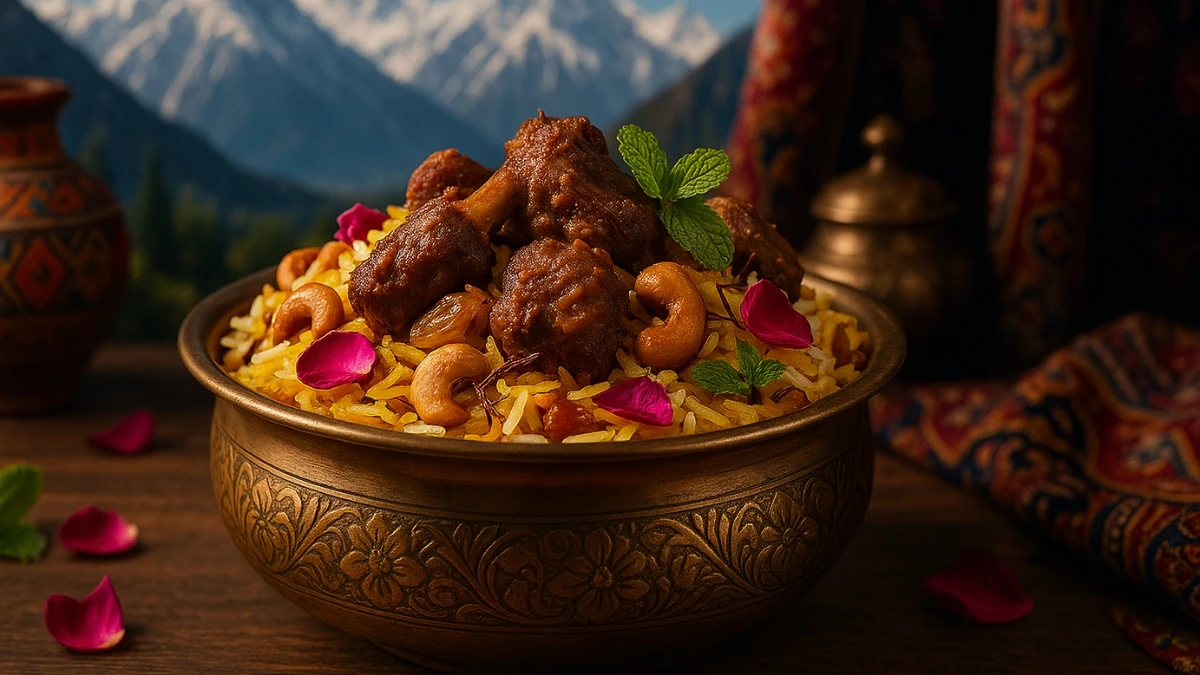
Kashmiri Biryani is a mild, aromatic biryani influenced by Persian culinary traditions and designed for the cool Himalayan climate.
This biryani is distinguished by its use of premium Kashmiri saffron, dried fruits like raisins and apricots, and nuts such as almonds and cashews.
The spices are gentle, including warming cardamom and cinnamon, creating a delicate yet luxurious flavor profile. The rice is fluffy and fragrant, absorbing the rich essence of meat cooked with yogurt and mild spices.
Often served as part of the grand Wazwan feast, Kashmiri Biryani is perfect for those who prefer a rich, sweet-savory dish without overwhelming heat. It’s a royal dish that warms both the body and soul.
- Origin: Persian influence in Kashmir Valley
- Signature Style: Mild spices with generous dry fruits and saffron
- Must-Try With: Wazwan feast experience
- Spice Level: Mild
Key Features:
- Liberal use of premium Kashmiri saffron
- Almonds, cashews, raisins, dried apricots
- Gentle, warming spices perfect for cold climate
9. Bombay Biryani

Bombay Biryani is a reflection of Mumbai’s cosmopolitan vibe accessible, hearty, and street-food friendly. It typically includes potatoes and boiled eggs, which absorb the flavorful spices and add texture.
The spice level is moderate, making it popular among a wide audience, including those who prefer less intense heat.
This biryani is known for its quick preparation methods that suit the fast-paced urban lifestyle, without compromising on taste.
The combination of tangy tomato-based gravy, fragrant spices, and perfectly cooked meat makes it a favorite at Mumbai’s iconic eateries and street stalls.
Pair it with sweet-salty raita or fresh salads for the ideal balance.
- Origin: Cosmopolitan Mumbai adaptation
- Signature Style: Democratic, accessible, street-food friendly
- Must-Try With: Mumbai street food experience
- Spice Level: Medium
Key Features:
- Potatoes and boiled eggs standard
- Moderate spicing for broad appeal
- Quick preparation methods
8. Memoni Biryani
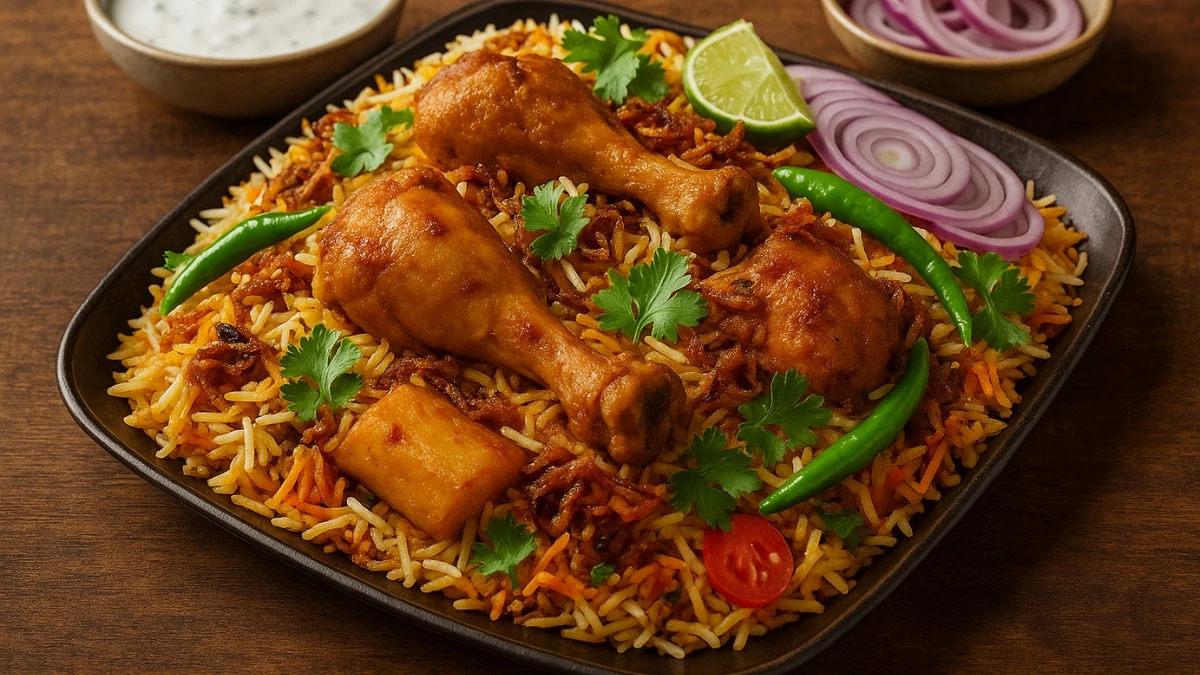
Memoni Biryani is a fiery, intense biryani made by the Memon community, known for their bold culinary traditions.
This biryani is not for the faint-hearted—it’s packed with spices and heat, delivering a powerful punch with every bite. The meat is marinated overnight in thick yogurt and a heavy dose of chili powder, pepper, and other spices, ensuring deep flavor penetration.
Memoni Biryani’s preparation emphasizes richness and robustness, often accompanied by generous servings of raita and lassi to cool the palate.
The biryani is a celebration of spice and intensity, perfect for lovers of bold, assertive flavors. It’s widely enjoyed in Mumbai’s Bohri Mohalla and other Memon communities.
- Origin: Memon trading community traditions
- Signature Style: Intensely spiced, not for the faint-hearted
- Must-Try With: Extra raita and lassi for cooling
- Spice Level: Very High
Key Features:
- Extremely high spice level
- Thick yogurt marinade
- Bold, assertive flavors
7. Thalassery Biryani

From the historic spice trading port of Thalassery comes a biryani that’s fragrant, rich, and full of coastal character.
Thalassery Biryani uses the short-grain kaima rice, which absorbs flavors exceptionally well. What makes it stand out is the inclusion of nuts like cashews and raisins that add sweetness and crunch, creating a layered texture experience.
This biryani also boasts unique seafood variants, such as fish biryani, showcasing Kerala’s bountiful coastal produce. Aromatic spices like star anise and cinnamon give it a warm, inviting flavor.
The liberal use of ghee (clarified butter) enriches the dish and binds the flavors together beautifully.
Typically served during special occasions or monsoon season, Thalassery Biryani is a must-try for those seeking a flavorful yet refined coastal biryani.
- Origin: Historic spice trading port of Thalassery
- Signature Style: Kaima rice with nuts, raisins, and seafood options
- Must-Try With: Fish biryani variant during monsoon
- Spice Level: Medium
Key Features:
- Addition of cashews and raisins
- Unique fish biryani variants
- Star anise and coastal spice blend
6. Sindhi Biryani
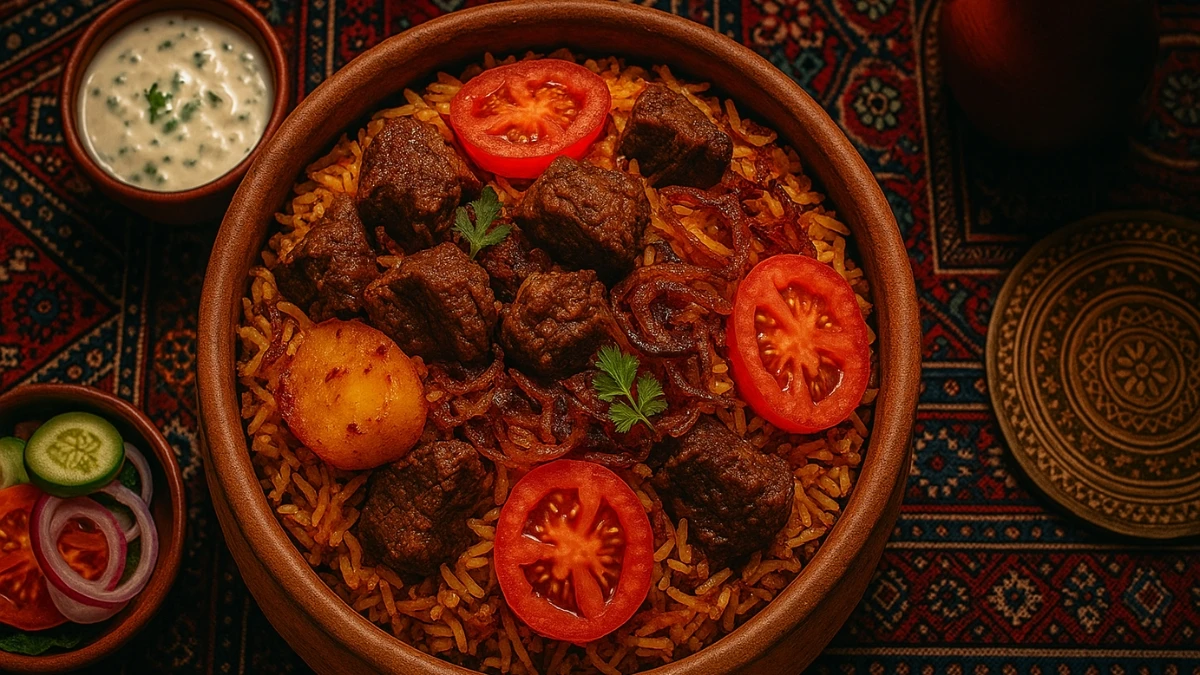
Sindhi Biryani is a vibrant and festive biryani that originated with the Sindhi community, especially after the Partition of India.
This biryani is renowned for its bright reddish-orange hue, courtesy of tomatoes and red chili powder, and its balance of sweet, sour, and spicy flavors.
Unlike many biryanis, it includes potatoes and dried fruits like plums (aloo bukhara), which add layers of texture and a subtle tartness.
The meat, usually mutton or chicken, is cooked with yogurt, spices, and fresh herbs to create a robust flavor profile.
Sindhi Biryani is often the centerpiece of community celebrations and large gatherings, known for its boldness and complexity.
It’s typically served with fresh salads or raita to complement its richness and spice. This biryani captures the spirit of celebration and community in every bite.
- Origin: Post-Partition adaptation (1947)
- Signature Style: Vibrant, vegetable-rich with dried fruits
- Must-Try With: Community celebrations and gatherings
- Spice Level: Mild to Medium
Key Features:
- Beautiful reddish-orange color from tomatoes
- Potatoes, dried plums (aloo bukhara)
- Balanced sweet, sour, and spicy flavors
5. Ambur Biryani
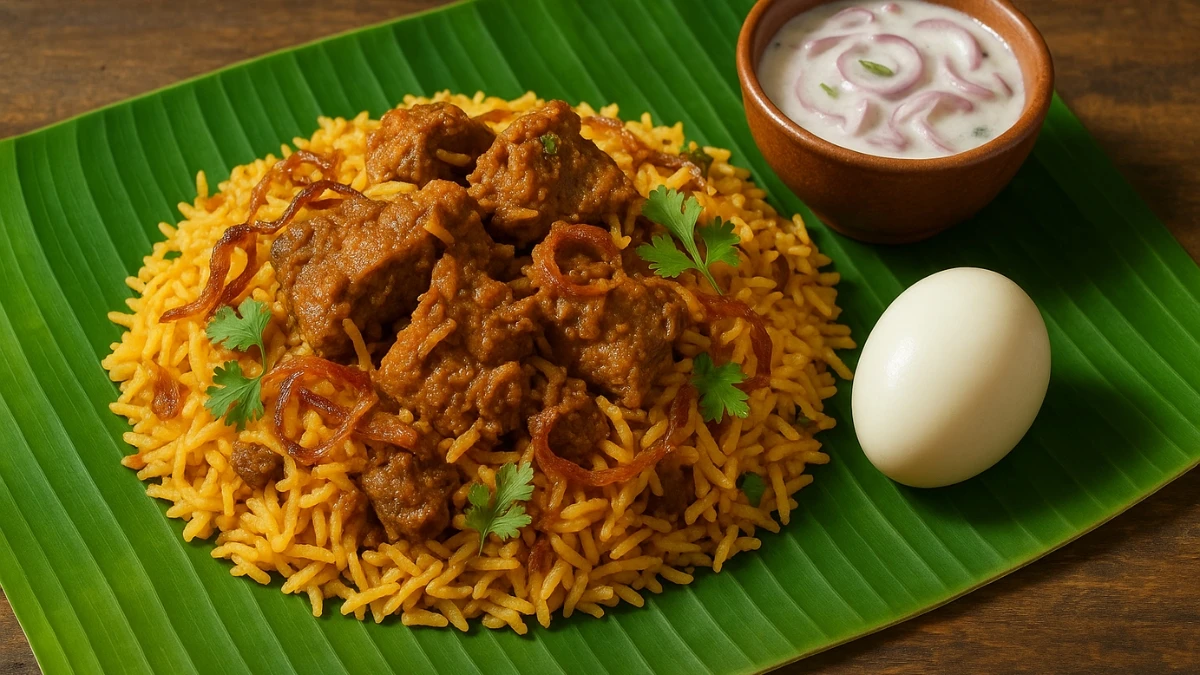
Ambur Biryani, named after the town of Ambur in Tamil Nadu, is famed for its tangy, robust flavor and distinct use of seeraga samba rice—a short-grain variety prized for its aroma and texture.
This biryani is unique for its tangy tomato-based marinade which sets it apart from many other biryanis that rely heavily on yogurt.
The black stone flower (kalpasi) spice adds an earthy depth, while the generous use of garlic and spices packs a flavorful punch.
Typically made with mutton or chicken, the meat is marinated thoroughly to infuse the spices deeply before slow cooking. Ambur Biryani is known for its slightly spicy, tangy taste that offers a delightful contrast to the fragrant rice.
Accompanied by cooling pachadi (yogurt side) and boiled eggs, it’s a favorite for those who love bold flavors with a hint of zest.
- Origin: Arcot Nawabs, 18th century Tamil Nadu
- Signature Style: Seeraga samba rice with tangy tomato base
- Must-Try With: Pachadi (yogurt side), boiled eggs
- Spice Level: Medium to High
Key Features:
- Short-grain seeraga samba rice
- Distinctive tangy flavor from tomatoes
- Black stone flower (kalpasi) spice blend
4. Dindigul Biryani
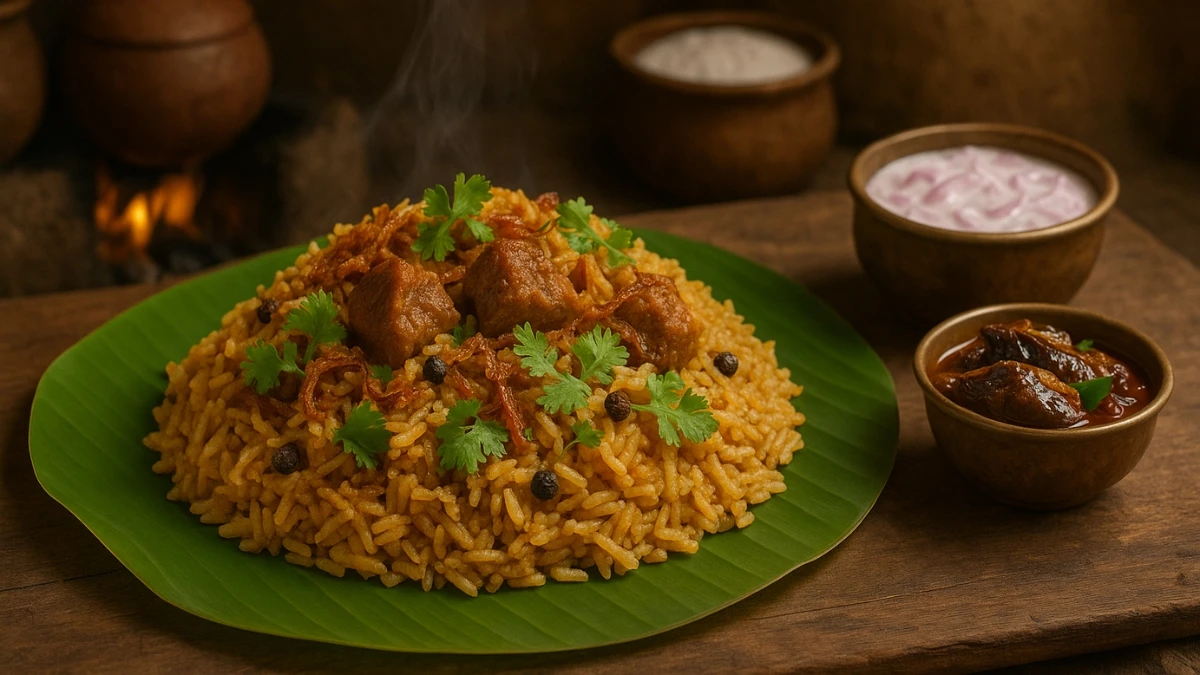
Dindigul Biryani hails from the town of Dindigul in Tamil Nadu and is famous for its distinct tangy and spicy flavor. It uses seeraga samba rice, a short-grain variety prized for its unique aroma and texture.
The meat, typically mutton or chicken, is marinated with a special blend of spices including black pepper, fennel seeds, and star anise, giving it a robust and slightly peppery profile.
The biryani is characterized by its dry yet flavorful preparation, where the spices and meat juices perfectly infuse the rice without excess oil or gravy.
Dindigul Biryani is usually served with cooling sides like curd pachadi or raita, balancing the bold spices. This biryani reflects the culinary heritage of Tamil Nadu and is a must-try for lovers of spicy, aromatic rice dishes.
- Origin: Ancient textile town of Dindigul, Tamil Nadu
- Signature Style: Small-grain rice with robust, fiery spices and tender mutton
- Must-Try With: Spicy pickle, onion raita, and traditional buttermilk
- Spice Level: High
Key Features:
- Jeera samba rice (smaller than basmati)
- Intense, complex spice blend with curd marinade
- Meat cut into smaller pieces for even cooking
- Distinctive smoky flavor from traditional cooking methods
- Often served wrapped in banana leaves
3. Kolkata Biryani

Kolkata Biryani has a fascinating history tied to the exile of Nawab Wajid Ali Shah in the mid-19th century, who brought his royal chefs to Bengal. Adapted to suit Bengali tastes and resources, this biryani is characterized by its subtle sweetness and the unexpected addition of potatoes and boiled eggs.
The potatoes absorb the rich spices and meat juices, adding a creamy, comforting texture that sets this biryani apart. The use of mild spices such as nutmeg and mace gives it a fragrant yet gentle flavor profile.
Kolkata Biryani uses the pakki method where meat and rice are cooked separately, maintaining a delicate balance between spice and aroma.
Often enjoyed as part of traditional family gatherings or Sunday meals, it brings a sense of warmth and nostalgia to the table. Its lighter, less spicy profile appeals to those who enjoy aromatic biryanis with a soft, sweet undertone.
- Origin: Wajid Ali Shah's exile (1856), adapted for Bengali palates
- Signature Style: Potato-enriched with subtle sweetness
- Must-Try With: Traditional Sunday family meal experience
- Spice Level: Mild
Key Features:
- Golden potato chunks as essential ingredient
- Milder spices, slight sweetness
- Boiled eggs standard inclusion
2. Lucknowi Biryani

Lucknowi or Awadhi Biryani originates from the refined kitchens of the Nawabs of Awadh and is known for its delicate flavors and elegant cooking style.
Unlike Hyderabadi Biryani, it follows the pakki method where both the meat and rice are cooked separately before layering and gentle steaming.
This technique allows the subtle fragrance of rose water, kewra essence, and saffron to shine without overpowering the palate with heat.
The meat in this biryani is incredibly tender, often melting off the bone, owing to slow cooking with aromatic spices and yogurt-based marinades. It’s known for its balance—light on spices but rich in aroma, offering a refined taste experience.
Traditionally served with burhani (a spiced yogurt drink) and soft breads like roomali roti, this biryani is the perfect choice for those who appreciate aromatic sophistication over fiery heat.
The gentle layering of flavors creates a dish that’s both comforting and regal.
- Origin: Nawabi courts of Awadh, 18th century
- Signature Style: Pakki (cooked) method with subtle elegance
- Must-Try With: Burhani raita, roomali roti
- Spice Level: Mild to Medium
Key Features:
- Delicate spicing with rose water and kewra essence
- Incredibly tender meat, fall-off-the-bone texture
- Emphasis on aroma over heat
1. Hyderabadi Biryani
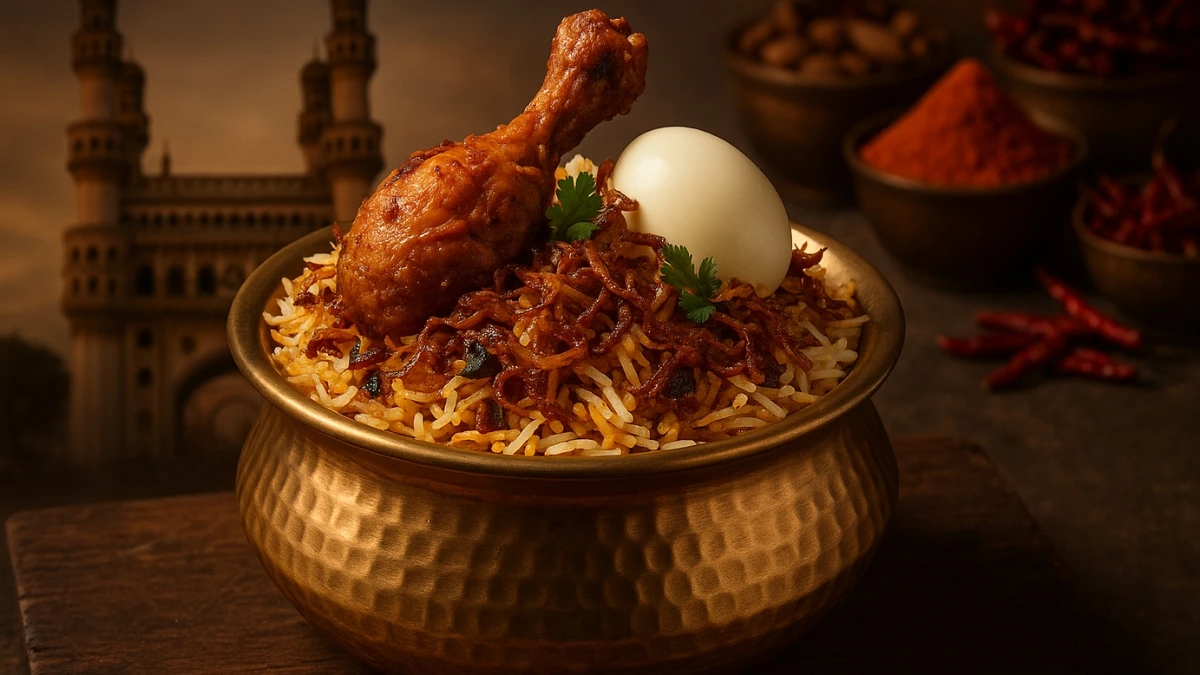
Hyderabadi Biryani stands tall as the undisputed king of Indian biryanis, originating from the royal kitchens of the Nizams in the 16th century. It is famed for its unique kacchi (raw) method where raw marinated meat is layered between partially cooked basmati rice and slow-cooked together under a tight seal in a process called dum.
This technique locks in the flavors and ensures the meat becomes tender while the rice absorbs the rich spices. Saffron, mint leaves, fried onions, and an array of fragrant spices lend it a vibrant aroma and distinct taste.
Hyderabadi Biryani comes primarily in two versions—kachchi (raw) and pakki (cooked)—but the former is more celebrated.
The layers of marinated meat and rice create a beautiful interplay of textures and flavors, ranging from the subtle sweetness of fried onions to the earthiness of slow-cooked meat.
Often paired with cool raita, boiled eggs, or spicy shorba (broth), this biryani is a culinary masterpiece and a must-try for any biryani lover.
- Origin: Nizami royal kitchens, 16th-18th century
- Signature Style: Kacchi (raw) method with intense dum cooking
- Must-Try With: Raita, shorba (mutton broth), boiled eggs
- Spice Level: Medium to High
Key Features:
- Raw marinated mutton layered with partially cooked rice
- Generous saffron, mint, and fried onions
- Rich, aromatic, and perfectly balanced spices
Disclaimer:
The selection of biryani varieties in this article is based on general popularity, regional significance, and culinary reputation. Taste preferences are subjective, and the list does not imply a definitive ranking. Regional availability, personal taste, and cultural influences may affect individual opinions. This article is intended for informational and entertainment purposes only.






